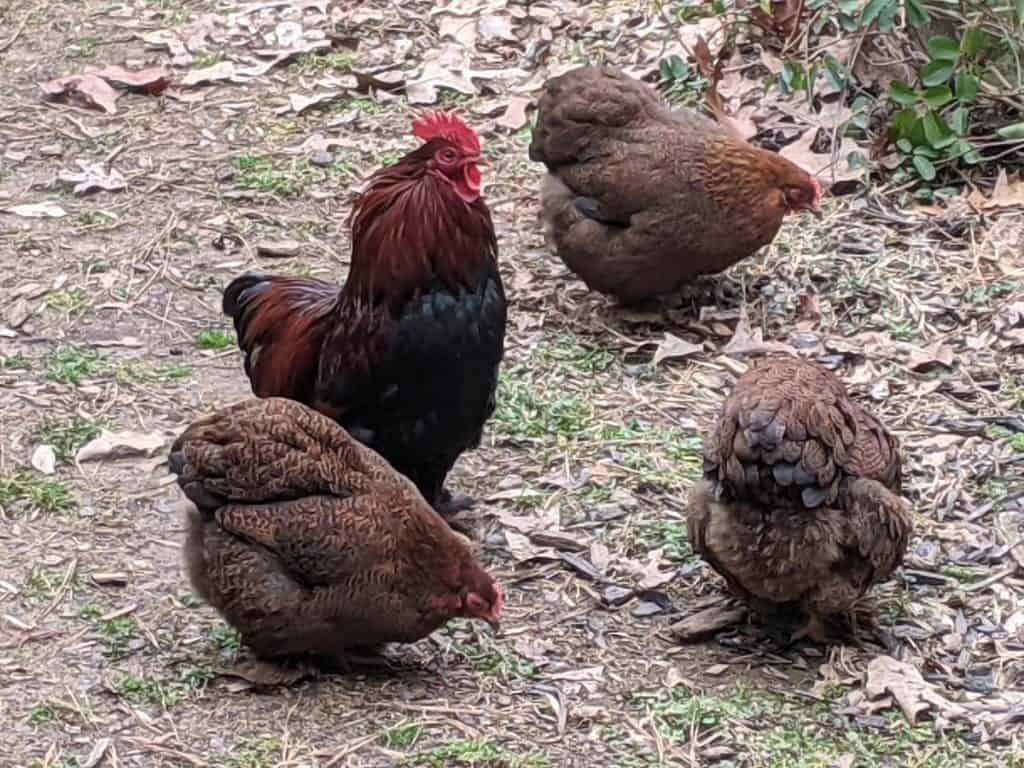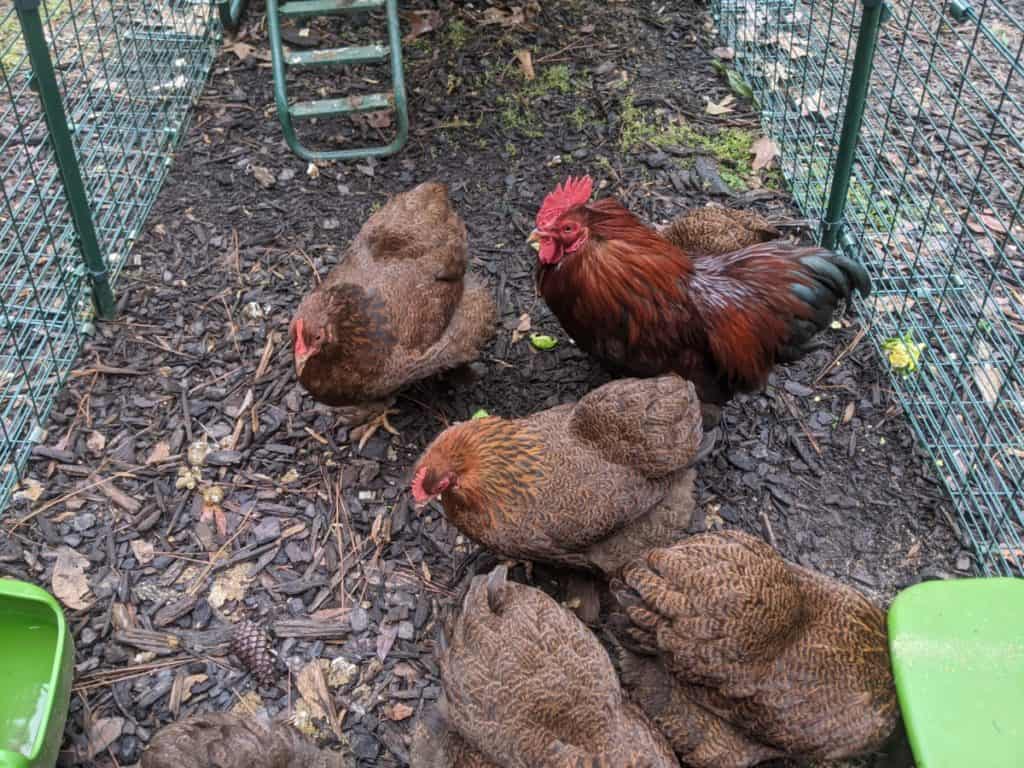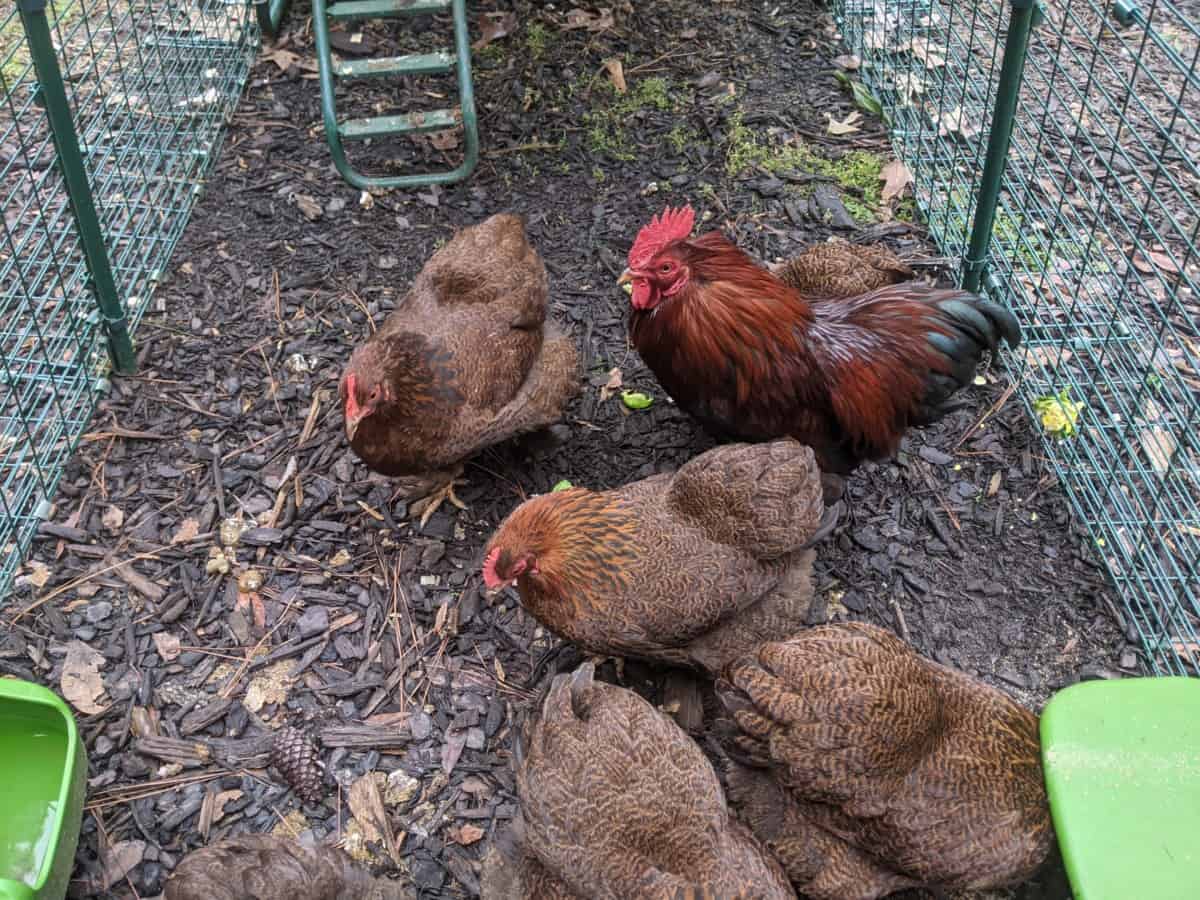Just like us, chickens need enough rest to function at their best. It is surprising that, in terms of sleep, chickens and humans have a lot in common.
We both experience REM (‘rapid eye movement’) sleep, as well as deep, or SW (‘slow wave’) sleep, and we both dream! You may be wondering how much sleep your backyard flock needs to remain alert, healthy, and happy.
Chickens need to sleep for 8 to 12 hours in a 24-hour period. They sleep at night and are active during the day. In winter, when nights are longer, they will sleep more than they do in summer. Young chicks and elderly chickens sleep for longer than adult chickens.
Several factors affect how much chickens will sleep – the number of daylight hours, their age, the presence of predators, the size of the flock. How much sleep a chicken needs also vary between individuals.
I have noticed that some of my hens take afternoon naps, while others cluck around the whole day, feeding and playing. Let us look at some of the reasons for chicken’s sleeping patterns.
How to ensure your chickens get the sleep they need
The two most important things that chickens need to get a good night’s rest are darkness and a comfortable roost. Chickens are diurnal, meaning that they naturally go to sleep at dusk and wake up at dawn with the sun. One should keep chickens in their coop at night to keep them safe from predators and ensure that they get uninterrupted sleep.
Chickens evolved from Asian jungle fowl, and in the wild, they perch high up on tree branches to sleep. Sleeping is a vulnerable time for chickens, so roosting off the ground keeps them safe from predators lurking below. Domesticated chickens have retained this strong instinct to sleep on a roost, even if they sleep in a safe, cozy coop.
One should always provide chickens with roosts inside their coop, as this is where they sleep a night.

Chickens are seasonal sleepers
In winter, the sun rises later in the morning and sets earlier in the evening, meaning that the number of daylight hours is fewer. Chickens, therefore, sleep for longer during winter.
Fewer daylight hours, unfortunately, means fewer eggs for us to eat. Because chickens originate from the equatorial region of Indonesia, they are not adapted to a significant variation in day and night hours.
Chickens need around 14 hours of daylight to produce eggs. Sunlight stimulates the chicken’s pituitary gland, in their brain, to release the hormone that signals the ovaries to release an egg. In countries closer to the earth’s poles, chickens may only get 8 daylight hours – much too little for egg production.
If you have a rooster in your flock, you may wonder why they wake up and crow so darn early. Chickens have different structures in their eyes that enable them to see ultraviolet light. This means that they can see the sunrise way before we do because ultraviolet rays reach the earth before visible rays of light.
Chicken’s physical need for sleep
Chickens physically need at least 8 hours of sleep to stay healthy and maintain their egg-laying cycle. Many commercial chicken farmers exploit the fact that chickens rely on light to lay their eggs by using supplemental lighting in their coops at night. Artificially increasing the number of daylight hours will trick the chicken’s body into laying more eggs.
It would be very cruel and unhealthy to keep a light on for 24 hours inside a chicken coop, as they would not sleep at all overnight. The stress of disrupting their natural sleep rhythm leads to negative behaviors like hen-pecking and even cannibalism.
The extra pressure on their reproductive system also increases the risk of ovarian cancer and problems like egg binding and vent prolapse.
Lighting in a chicken coop
If you live in an area where winters are extremely cold, you will need to use a coop light to provide your flock with some extra warmth at night. It is a good idea to connect the light to an automatic timer so that it switches on and off at the same time each morning and evening.
The coop light should only be used to boost daylight hours to 14-16 hours per day. This will help to keep your hen’s egg-laying cycle regular. If you are hesitant to disrupt their rhythms but still need to keep them warm, use a red light.
One needs to be careful when setting up lighting in a chicken coop, as there is a fire risk! Poorly installed wiring that could spark will set the bedding material alight quickly. Light bulbs can also heat up to the point that they set nearby sawdust or hay alight.
You need to install the lighting as high up in the coop as possible, out of the chicken’s reach, because they are curious creatures and will peck at the bulb. If a light bulb shatters, the shards of glass will seriously injure chicken’s feet, and one cannot use shatter-proof bulbs, as they contain toxins that are fatal to chickens when released.

Do chickens sleep during the day?
Strictly speaking, chickens do not need to sleep during the day, but most chicken keepers will notice their chickens taking little naps in the day, especially around midday.
If there are many roosts and safe hiding spots around the garden, chickens will take advantage of these. In a larger flock, chickens feel more comfortable taking naps during the day because many other eyes are on the lookout for predators.
It is common to see small chicks sleeping during the day, especially if they are still being brooded by their mother.
Chickens are much better at entering a state of deep sleep than we humans. They can sleep well in 15-second intervals! Therefore, their afternoon naps are always relatively short. Chickens have probably evolved this way due to the constant threat of predators they face.
Chickens sleep with one eye open
Another adaptation that chickens have developed due to predation is unihemispheric slow-wave sleep (‘USWS). This gives chickens the ability to be both awake and asleep at the same time! Like our brain, a chicken’s brain is split into two hemispheres, left and right. USWS means that they can rest one side of their brain while the other stays active.
Research has shown that when chickens roost in a row, the birds in the middle will sleep with both eyes shut, while the chickens on opposite ends of the perch sleep with the outer eye open and the other shut. During the night, the chickens on the ends will turn 180 degrees on the perch, so that they can rest the other side of their brain.
Do Chickens Dream?
Chickens share the same sleep stages as we do. REM sleep can last anywhere from minutes to an hour in humans, whereas in chickens, it occurs for only a few seconds. During REM, the brain is as active as it is when awake. This is because REM sleep is the stage where we dream. Chickens have dreams!
The other sleep stage we share with chickens is slow-wave sleep (SW). This is the deep, dreamless state of sleep during which our brain organizes all the information it has taken in from the previous day, allowing them to take in more info the next day. Chickens have relatively large brains for their body size, and they can perform high-level cognitive tasks. SW sleep is thus vital for a chicken’s health.
Conclusion
Chickens require at least 8 hours of shut-eye to keep their brains and bodies functioning healthily. Naturally, they wake up as the sun rises and go to sleep as the sun sets. Therefore, chickens will sleep for longer during the winter because there are fewer daylight hours.
Young chicks are still growing fast, and due to their high metabolic demands, they sleep more than adult chickens. Elderly chickens also sleep for longer, napping during the day. It is unnecessary to worry about whether your flock is getting enough sleep or not – as long as they have a safe, dark coop with a roost, they will sleep just fine.

